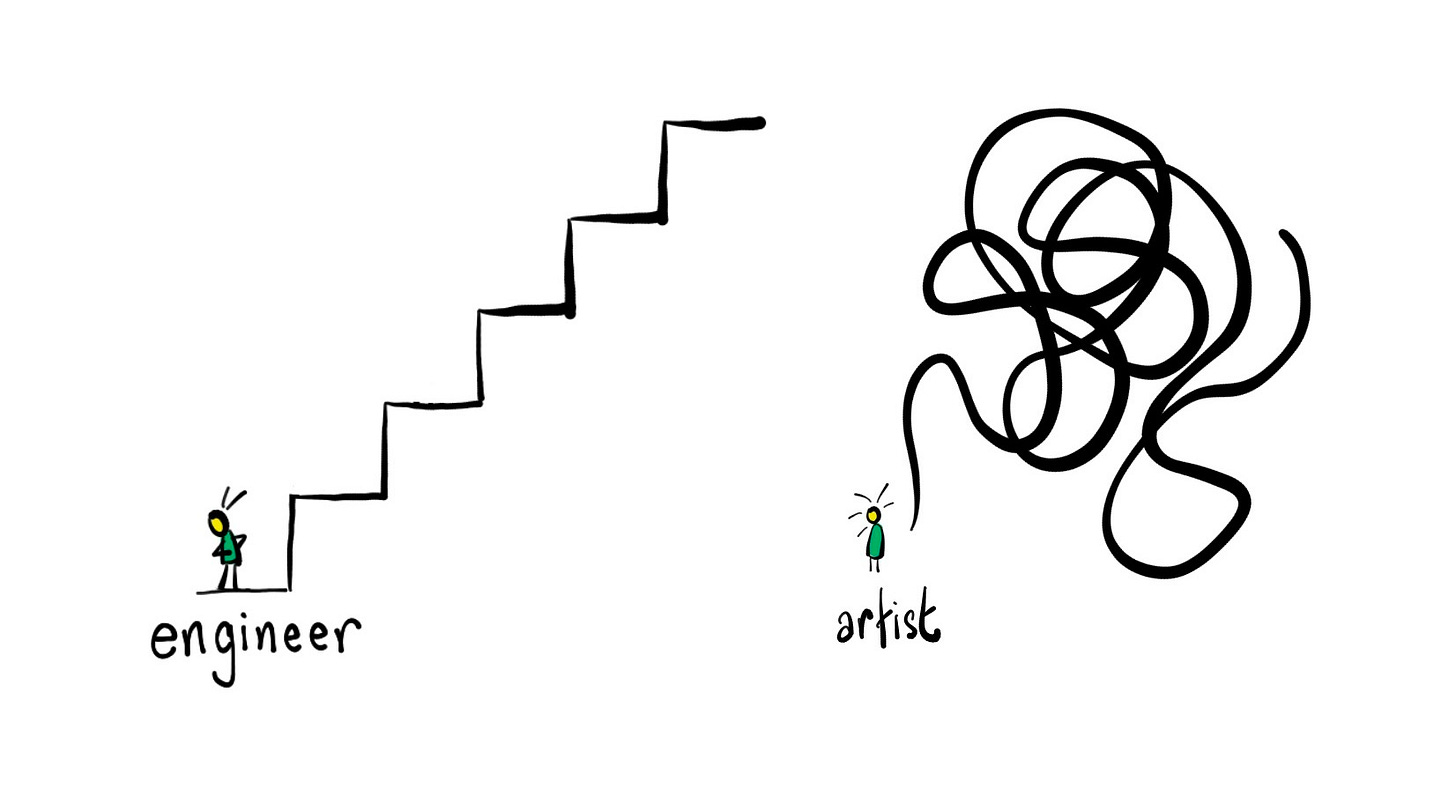Is This an Engineering Question or a Human Question?
The art of balancing process and discovery in a changing life
At first glance, it might seem like most challenges in life can be solved by applying the right process—a step-by-step method where, if you just follow diligently and correctly, you’ll end up with a reliable solution.
This is how engineers approach problems. They gather all the details, account for all the variables, and design a system that, with precision, creates a predictable outcome. It’s clear, logical, and efficient.
They can then scale up!
But then there are problems that don’t fit neatly into that framework. Not all variables are known. In fact, the problem itself evolves as you try to solve it. And, most confounding of all, you—the one working on the problem—also change in the process. These are the human problems. And this is where the engineering mindset meets its limits, or at least needs to evolve into something broader.
This has been my journey of mindset shift while building The Happy Startup School - from engineer to artist.
Engineering problems are fundamentally about control. When you have all the data, all the variables, and a proven method, you can map out a pathway and expect consistent results. It’s comforting in its clarity. If something doesn’t go as expected, you can adjust, recalibrate, and continue forward. The process might take time, but it’s linear. You see the end before you start, and the job is simply to walk the path.
This is how I built software. This is one of my superpowers.
Human problems, though? They’re not a straight line. They’re more like jazz—structured at times, improvisational at others. Yes, there are components that benefit from an engineering approach—discrete problems you can isolate and manage. But the bigger picture of the human experience is full of uncertainty, change, and discovery. You don’t just solve the problem—you discover the problem as you go.
This is what I’ve learned as a coach. What people say they wanted at the beginning isn’t what they actually needed in the end.
Take, for example, designing a life of purpose. At first, it feels like it should be an engineering problem. Find your passion. Apply yourself diligently. Voila! But it rarely works like that. As you explore what matters to you, your understanding of your purpose deepens and shifts. What you thought was important at 30 might look entirely different at 50. Your values, your perspective, your life circumstances all evolve, and with them, so do the questions you ask.
This is the crux of a human problem: the question changes as you try to answer it. And with it, so do you.
Yet, there’s value in balancing the engineering mindset with the human one. An engineering approach gives you structure, agency, and tools to solve specific challenges along the way. For instance, breaking down a large, daunting goal into manageable steps is an engineering solution to a human problem. You might not know the final shape of your answer, but you can create mini-solutions along the way that make the journey feel doable.
This is at the core of my philosophy when designing our Vision 20/20 Program.
But here’s the catch: you also have to embrace the unpredictability that comes with human problems. You have to let go of the need for certainty and accept that some questions won’t have clean, finite answers. The purpose of your work, the direction of your life—these are not fixed points on a map. They’re destinations that shift and morph as you approach them. And that’s not a flaw. That’s growth.
This is why group work is so powerful on this journey - we need to be held by others when navigating uncertainty.
To live a life of meaning, to pivot in a new direction at midlife, requires you to marry these two mindsets. Yes, apply the engineering mindset where it serves you. Break things down into smaller, more manageable pieces. Design systems that give you some level of control and comfort. But also acknowledge that life is inherently uncertain and evolving. You can’t engineer your way into absolute clarity, and often, the act of letting go and accepting the flow is what brings the most profound change.
In the end, maybe the key to navigating life’s big questions is recognising that they’re not always one thing or another. Sometimes, they’re both. And knowing when to lean into process, and when to surrender to adventure, is the ultimate art of living.



